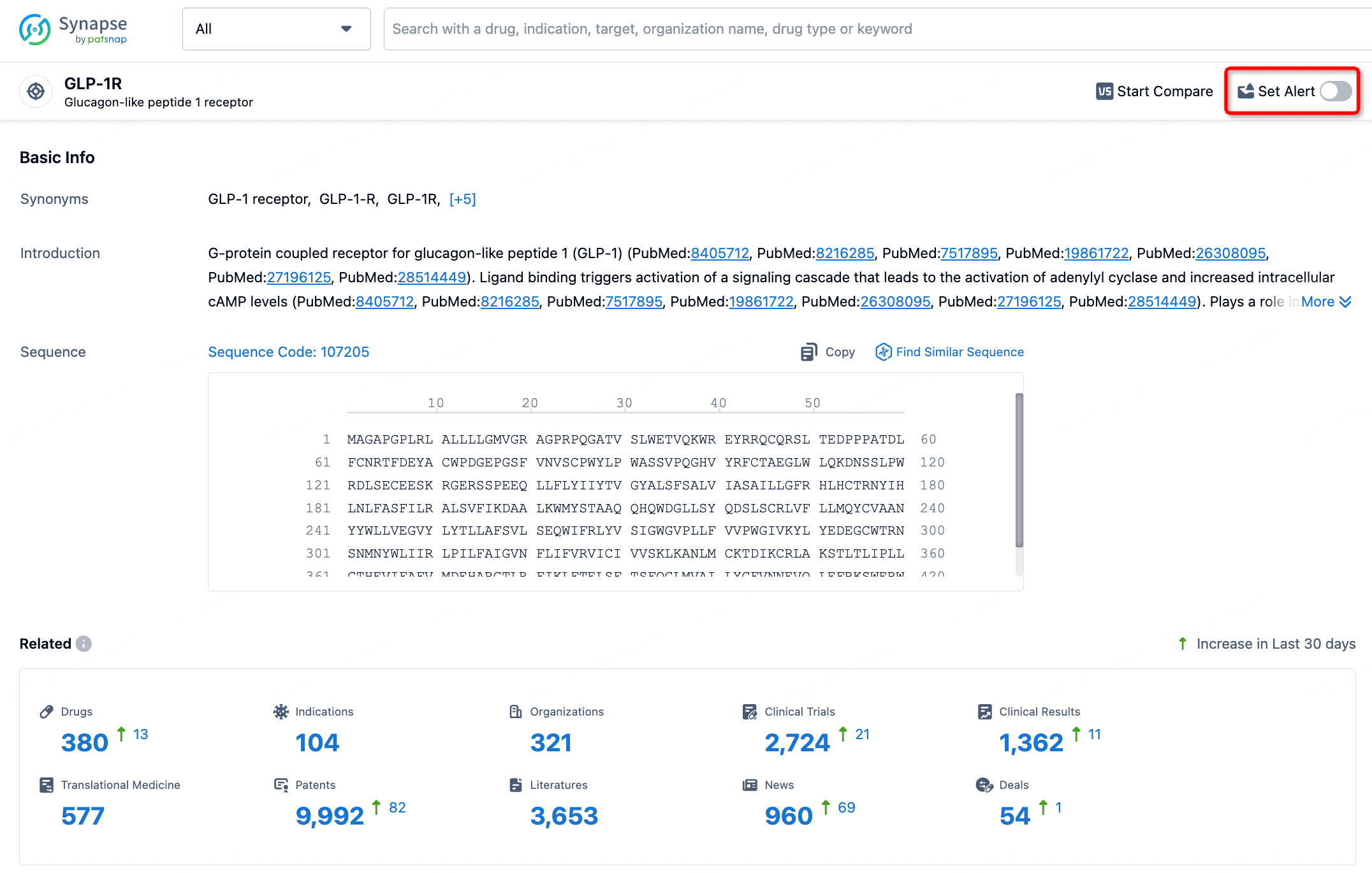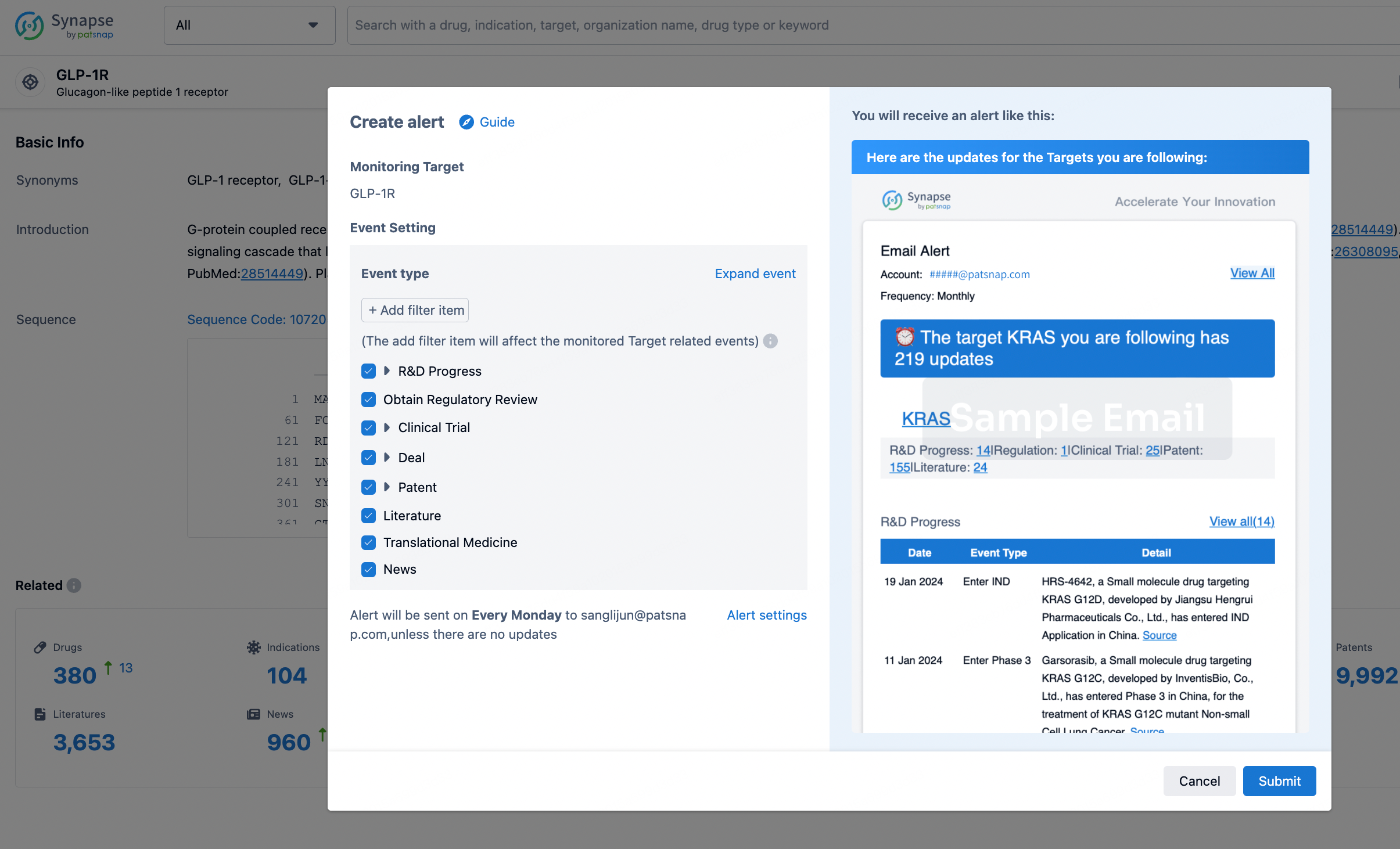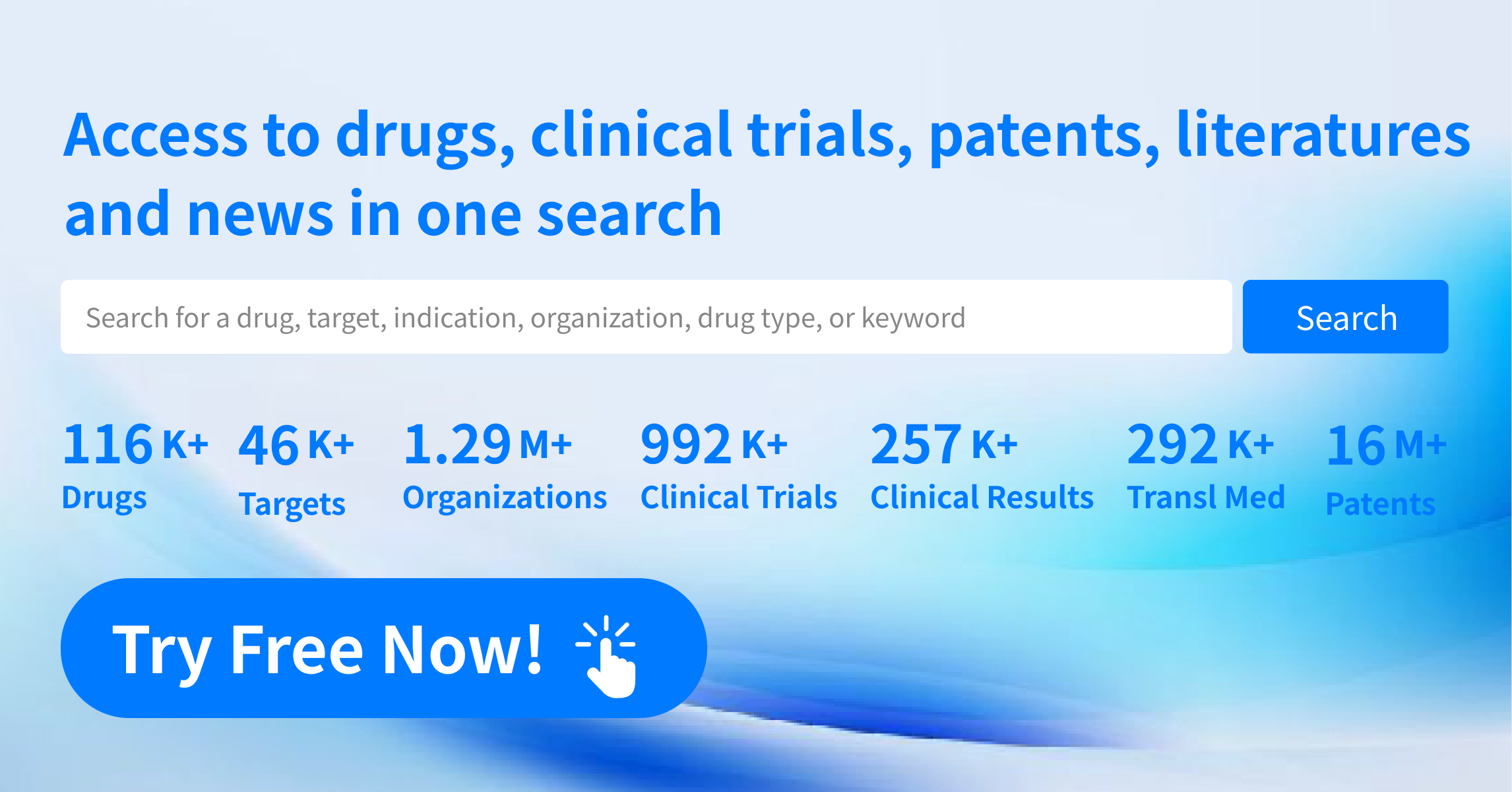Request Demo
What are α3β4 receptor agonists and how do they work?
25 June 2024
Introduction to α3β4 receptor agonists
Nicotinic acetylcholine receptors (nAChRs) are pivotal components of the nervous system, involved in a plethora of physiological processes. Among the diverse subtypes of these receptors, the α3β4 subtype has garnered significant interest in recent years. α3β4 receptor agonists are compounds that selectively bind to and activate this specific subtype of nAChRs, fostering a wave of potential therapeutic applications. These receptors are predominantly expressed in the peripheral nervous system and various brain regions, rendering them attractive targets for drug development aimed at modulating neurotransmission and treating a variety of conditions.
How do α3β4 receptor agonists work?
To appreciate how α3β4 receptor agonists function, it is essential to understand the basics of nAChRs. These receptors are ligand-gated ion channels that respond to the neurotransmitter acetylcholine (ACh), as well as nicotine. The α3β4 subtype is a heteromeric receptor, meaning it is composed of different subunits – specifically, three α3 subunits and two β4 subunits. When an agonist binds to these receptors, it induces a conformational change that opens the ion channel, allowing the influx of cations like sodium (Na+) and calcium (Ca2+). This ion flow subsequently depolarizes the neuronal membrane, leading to the propagation of an action potential and the release of neurotransmitters.
The activation of α3β4 receptors influences various signaling pathways and modulates the release of several neurotransmitters, such as dopamine, norepinephrine, and serotonin. This modulation can have far-reaching effects on neuronal communication and overall brain function, indicating why these receptors are so crucial in both normal physiology and disease states.
What are α3β4 receptor agonists used for?
The scope of potential therapeutic applications for α3β4 receptor agonists is broad and continues to expand with ongoing research. One of the most promising areas is in the treatment of neurological and psychiatric disorders. For instance, these agonists have shown potential in addressing nicotine addiction. By binding to α3β4 receptors, these compounds can modulate reward pathways in the brain, helping to reduce cravings and withdrawal symptoms associated with smoking cessation.
Beyond addiction, α3β4 receptor agonists are being investigated for their role in treating certain neurodegenerative diseases. Research suggests that these agonists may offer neuroprotective benefits in conditions like Parkinson's disease and Alzheimer's disease by enhancing cholinergic transmission and reducing neuroinflammation. These mechanisms could help slow disease progression and improve cognitive function in affected individuals.
Additionally, there is growing evidence that α3β4 receptor agonists could be beneficial in managing pain. Chronic pain conditions, particularly neuropathic pain, often involve dysregulated cholinergic signaling. By activating the α3β4 receptors, agonists can modulate pain pathways and provide analgesic effects, presenting a potential alternative to traditional pain medications, which often have significant side effects and addiction potential.
Moreover, α3β4 receptor agonists are being explored for their cardiovascular effects. The α3β4 receptors are also expressed in the autonomic ganglia, which play a critical role in regulating cardiovascular function. Agonists targeting these receptors may help manage conditions such as hypertension by modulating autonomic nervous system activity.
In conclusion, α3β4 receptor agonists represent a fascinating and evolving area of pharmacology with significant therapeutic potential. By selectively targeting the α3β4 nAChRs, these compounds can influence numerous physiological processes, offering hope for the treatment of a variety of conditions, from addiction and neurodegenerative diseases to pain and cardiovascular disorders. As research continues to unfold, the full extent of the benefits and applications of α3β4 receptor agonists will likely become even more apparent, promising new avenues for medical intervention and improved patient outcomes.
Nicotinic acetylcholine receptors (nAChRs) are pivotal components of the nervous system, involved in a plethora of physiological processes. Among the diverse subtypes of these receptors, the α3β4 subtype has garnered significant interest in recent years. α3β4 receptor agonists are compounds that selectively bind to and activate this specific subtype of nAChRs, fostering a wave of potential therapeutic applications. These receptors are predominantly expressed in the peripheral nervous system and various brain regions, rendering them attractive targets for drug development aimed at modulating neurotransmission and treating a variety of conditions.
How do α3β4 receptor agonists work?
To appreciate how α3β4 receptor agonists function, it is essential to understand the basics of nAChRs. These receptors are ligand-gated ion channels that respond to the neurotransmitter acetylcholine (ACh), as well as nicotine. The α3β4 subtype is a heteromeric receptor, meaning it is composed of different subunits – specifically, three α3 subunits and two β4 subunits. When an agonist binds to these receptors, it induces a conformational change that opens the ion channel, allowing the influx of cations like sodium (Na+) and calcium (Ca2+). This ion flow subsequently depolarizes the neuronal membrane, leading to the propagation of an action potential and the release of neurotransmitters.
The activation of α3β4 receptors influences various signaling pathways and modulates the release of several neurotransmitters, such as dopamine, norepinephrine, and serotonin. This modulation can have far-reaching effects on neuronal communication and overall brain function, indicating why these receptors are so crucial in both normal physiology and disease states.
What are α3β4 receptor agonists used for?
The scope of potential therapeutic applications for α3β4 receptor agonists is broad and continues to expand with ongoing research. One of the most promising areas is in the treatment of neurological and psychiatric disorders. For instance, these agonists have shown potential in addressing nicotine addiction. By binding to α3β4 receptors, these compounds can modulate reward pathways in the brain, helping to reduce cravings and withdrawal symptoms associated with smoking cessation.
Beyond addiction, α3β4 receptor agonists are being investigated for their role in treating certain neurodegenerative diseases. Research suggests that these agonists may offer neuroprotective benefits in conditions like Parkinson's disease and Alzheimer's disease by enhancing cholinergic transmission and reducing neuroinflammation. These mechanisms could help slow disease progression and improve cognitive function in affected individuals.
Additionally, there is growing evidence that α3β4 receptor agonists could be beneficial in managing pain. Chronic pain conditions, particularly neuropathic pain, often involve dysregulated cholinergic signaling. By activating the α3β4 receptors, agonists can modulate pain pathways and provide analgesic effects, presenting a potential alternative to traditional pain medications, which often have significant side effects and addiction potential.
Moreover, α3β4 receptor agonists are being explored for their cardiovascular effects. The α3β4 receptors are also expressed in the autonomic ganglia, which play a critical role in regulating cardiovascular function. Agonists targeting these receptors may help manage conditions such as hypertension by modulating autonomic nervous system activity.
In conclusion, α3β4 receptor agonists represent a fascinating and evolving area of pharmacology with significant therapeutic potential. By selectively targeting the α3β4 nAChRs, these compounds can influence numerous physiological processes, offering hope for the treatment of a variety of conditions, from addiction and neurodegenerative diseases to pain and cardiovascular disorders. As research continues to unfold, the full extent of the benefits and applications of α3β4 receptor agonists will likely become even more apparent, promising new avenues for medical intervention and improved patient outcomes.
How to obtain the latest development progress of all targets?
In the Synapse database, you can stay updated on the latest research and development advances of all targets. This service is accessible anytime and anywhere, with updates available daily or weekly. Use the "Set Alert" function to stay informed. Click on the image below to embark on a brand new journey of drug discovery!
AI Agents Built for Biopharma Breakthroughs
Accelerate discovery. Empower decisions. Transform outcomes.
Get started for free today!
Accelerate Strategic R&D decision making with Synapse, PatSnap’s AI-powered Connected Innovation Intelligence Platform Built for Life Sciences Professionals.
Start your data trial now!
Synapse data is also accessible to external entities via APIs or data packages. Empower better decisions with the latest in pharmaceutical intelligence.


